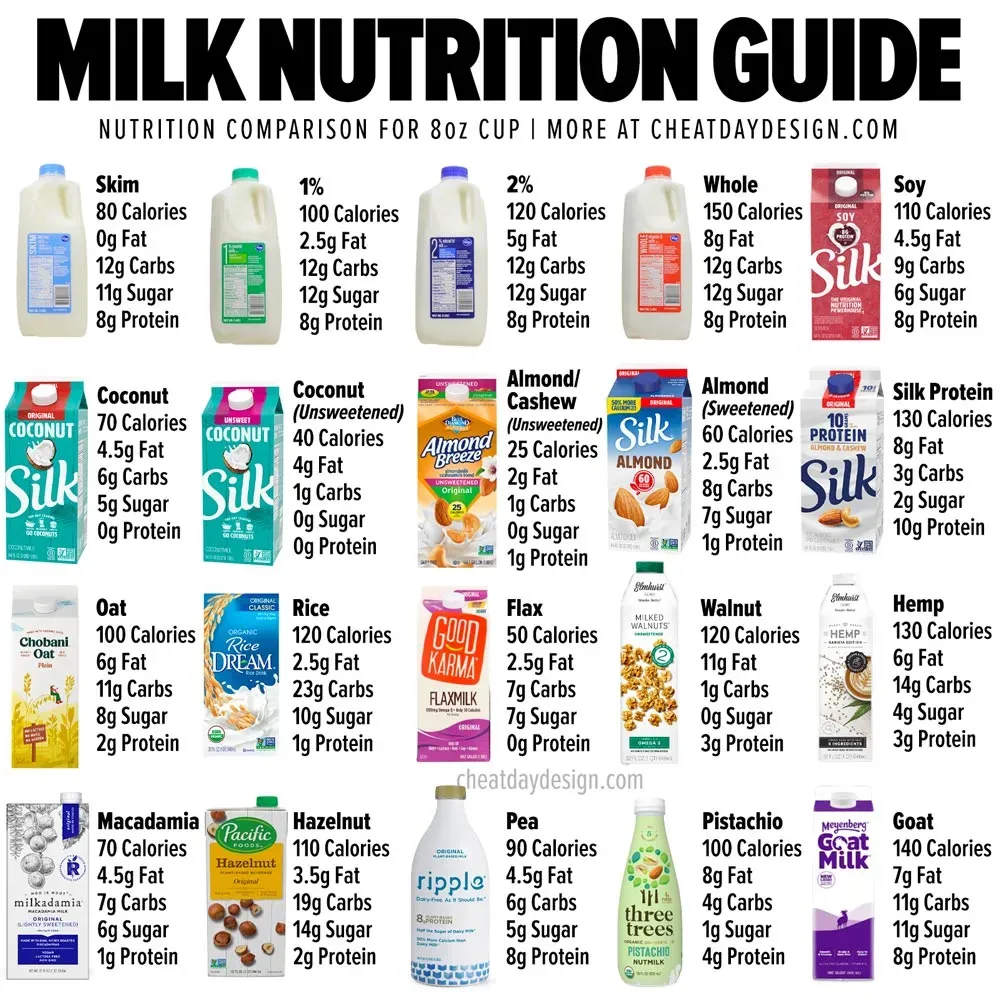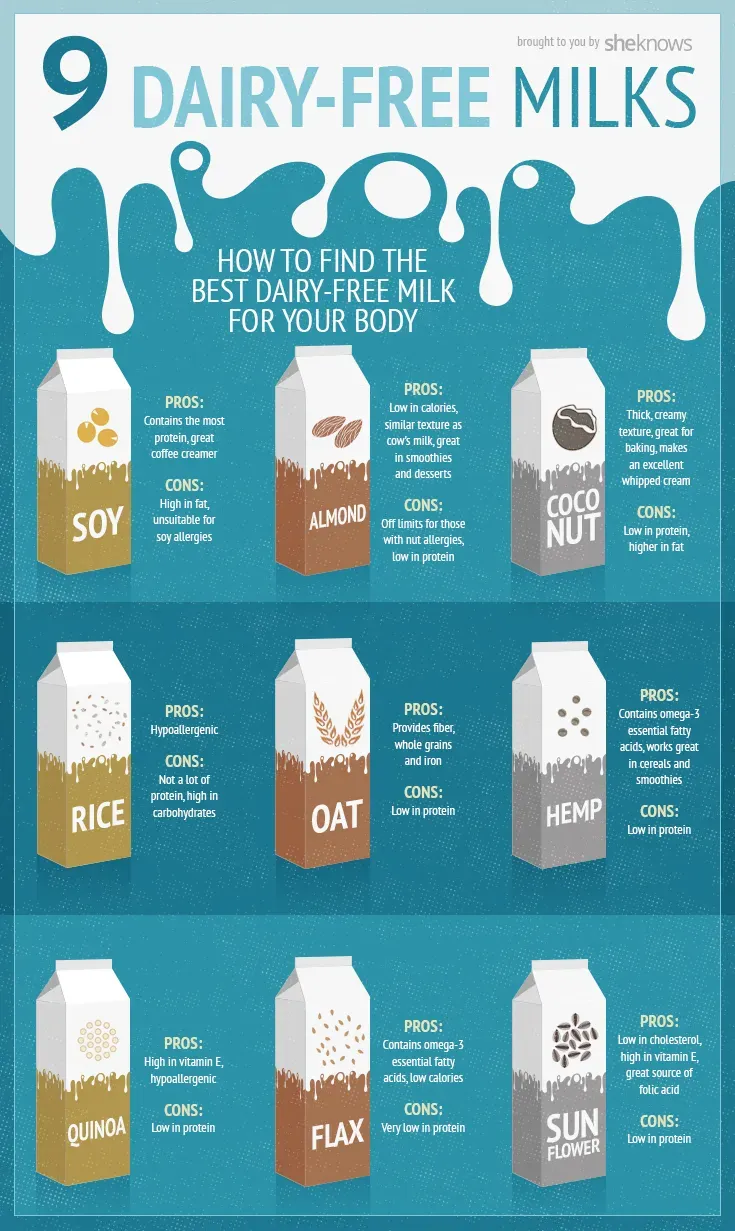Table of Contents
Maybe you're waving goodbye to dairy because your stomach stages a protest every time, or perhaps you're just curious about what else is out there besides the standard low-fat carton. Whatever the reason, navigating the world of milk alternatives can feel like trying to pick a single coffee shop in a city that has one on every corner. The shelves are packed, labels are confusing, and everyone seems to have a strong opinion about oat versus almond. Finding the right low fat milk replacement isn't just about dodging dairy; it's about finding something that fits your taste, your nutritional needs, and your lifestyle without feeling like a compromise.
Why Ditch the Dairy? Exploring Low Fat Milk Replacement Needs

Why Ditch the Dairy? Exploring Low Fat Milk Replacement Needs
The Lactose Lowdown and Allergy Alert
let's be real. For a huge chunk of the population, dairy milk just doesn't agree with their insides. We're talking about lactose intolerance, where your body simply doesn't produce enough of the enzyme needed to break down the sugar (lactose) in milk. The result? Bloating, gas, stomach cramps – not exactly a fun time. Millions deal with this daily, and suddenly, a low fat milk replacement looks less like a trend and more like a necessity for comfortable living. Then there are actual dairy allergies, a more serious immune system reaction that can range from hives to anaphylaxis. For these folks, ditching dairy isn't a choice; it's critical for their health.
Dietary Shifts and Health Goals
Beyond medical necessity, a lot of people are actively choosing alternatives as part of a broader dietary shift. Veganism is a big one, obviously, completely cutting out all animal products. But even for those not fully vegan, concerns about saturated fat in traditional dairy or the desire for different nutrient profiles drive the switch. Some are looking for fewer calories, others for added vitamins or minerals often fortified in plant-based options. It’s about aligning what you drink with your overall health and ethical picture. Finding the right low fat milk replacement becomes part of that personal wellness puzzle.
- Lactose Intolerance: Digestive discomfort from milk sugar.
- Dairy Allergy: Immune reaction to milk proteins.
- Vegan Diet: Avoiding all animal products.
- Calorie/Fat Reduction: Seeking lower saturated fat options.
- Nutrient Preference: Looking for fortified vitamins (like B12, D) or different protein sources.
- Environmental Concerns: Impact of dairy farming.
- Ethical Stance: Animal welfare considerations.
Environmental Footprint and Ethical Considerations
Then there's the bigger picture stuff. The environmental impact of dairy farming is a growing concern for many. We're talking about water usage, greenhouse gas emissions, and land requirements. Switching to certain plant-based alternatives can significantly reduce that footprint. On the ethical side, the treatment of dairy cows in industrial farming is another reason people opt out. They feel more comfortable supporting products that don't involve animal agriculture. Choosing a low fat milk replacement can be a small but significant step towards a more sustainable and ethically aligned lifestyle.
Popular Low Fat Milk Replacement Options on the Shelves

Popular Low Fat Milk Replacement Options on the Shelves
Almond Milk: The Ubiquitous Carton
Walk down the dairy-free aisle and you'll likely trip over stacks of almond milk. It's become the go-to low fat milk replacement for many, primarily because it's widely available and generally lower in calories compared to some other options, especially the unsweetened varieties. It has a mild, slightly nutty flavor that doesn't overpower things like cereal or smoothies. The texture is often thinner than dairy milk, which works well for some applications, less so for others where you need richness. Manufacturers fortify it with calcium and vitamin D, mimicking dairy's nutrient profile, but protein content is typically quite low compared to cow's milk.
Oat Milk: The Creamy Contender
Oat milk exploded onto the scene and quickly became a barista favorite for its ability to steam and froth, making it a solid low fat milk replacement for lattes and cappuccinos. It boasts a naturally creamier texture than almond milk and a slightly sweet, mild flavor that many find appealing. While often higher in calories and carbs than almond milk (due to the oats), it can offer a bit more fiber and sometimes a touch more protein depending on the brand. It's also generally considered more sustainable than almond milk regarding water usage. Finding a good low-fat version often means checking the labels carefully, as the standard types can be quite caloric.
So, what are the main players in the low fat milk replacement game?
- Almond Milk: Light, nutty, widely available.
- Oat Milk: Creamy, good for coffee, slightly sweeter.
- Soy Milk: Classic alternative, good protein source.
- Cashew Milk: Richer texture, often blended.
- Coconut Milk (Beverage type): Thinner than canned, distinct flavor.
- Rice Milk: Hypoallergenic, often thin and sweet.
Comparing Low Fat Milk Replacement: Nutrition, Taste, and More

Comparing Low Fat Milk Replacement: Nutrition, Taste, and More
Breaking Down the Nutrition Labels
Alright, let's get down to brass tacks with what's actually inside these cartons. When you're picking a low fat milk replacement, the nutrition facts panel is your best friend, or maybe your frenemy depending on the brand. Calories are usually the first thing people eye. Unsweetened almond milk typically wins the low-cal contest, often hovering around 30-40 calories per cup. Oat milk, while creamier, tends to be higher, sometimes 90-130 calories, because oats have more natural carbs and fats. Soy milk sits somewhere in the middle, often comparable to skim cow's milk in terms of calories and fat, but it stands out in the protein department. If protein is a priority, soy is generally the closest plant-based match to dairy, offering around 7-8 grams per cup, while almond or rice milk might only have one measly gram.
Fortification is another crucial bit. Most plant milks are fortified to mimic dairy's calcium and vitamin D levels, which is great, but check the labels to be sure. Some brands add B12, which is important for vegans. Sugar is the other big variable. Always look for "unsweetened" versions if you're trying to cut down on added sugar, because the sweetened varieties can pack a surprising amount. Fat content varies too, even within the "low fat" category of dairy alternatives. Some oat or soy milks might have slightly more fat than unsweetened almond, contributing to that richer texture, but they're still generally lower in saturated fat than whole milk.
Taste, Texture, and How They Behave
Nutrition is one thing, but let's be honest, if it tastes awful or curdles in your coffee, it's not going to stick around in your fridge. Taste is subjective, of course. Almond milk has a distinct nuttiness that some love and others find off-putting. Oat milk has a mild, slightly sweet, cereal-like flavor that's generally well-received and doesn't usually clash with coffee or tea. Soy milk can have a slightly bean-y undertone that's a dealbreaker for some. Rice milk is often quite watery and sweet, making it less versatile.
Texture matters a lot, especially if you're using your low fat milk replacement in hot drinks or for cooking. Oat milk excels here; its natural creaminess helps it froth nicely and it's less likely to separate in hot beverages compared to almond or soy, though formulations vary wildly by brand. Almond milk is usually thinner. Soy milk can sometimes curdle in hot, acidic coffee, which is a drag. For cooking and baking, some alternatives work better than others. Oat and soy tend to be more reliable due to their higher fat and protein content, providing better structure and richness than watery rice or almond milk.
Low Fat Milk Replacement | Calories (per cup, unsweetened) | Protein (grams per cup) | Key Flavor Notes |
|---|---|---|---|
Almond Milk | 30-40 | ~1 | Mild, slightly nutty |
Oat Milk | 90-130 | ~2-3 | Creamy, slightly sweet |
Soy Milk | 80-100 | ~7-8 | Neutral to slightly "beany" |
Rice Milk | 110-130 | ~0-1 | Thin, sweet |
Choosing the Right Low Fat Milk Replacement for Your Lifestyle

Choosing the Right Low Fat Milk Replacement for Your Lifestyle
Matching Your Needs to the Carton
So, you've seen the options, peeked at the nutrition labels, and maybe even done a quick sniff test in the grocery aisle (don't pretend you haven't). Now comes the moment of truth: picking the low fat milk replacement that actually fits your life. This isn't a one-size-fits-all deal. If lactose sends you running for the hills, obviously any dairy is out. If you're managing a diagnosed dairy allergy, cross-contamination becomes a serious concern, so certified allergy-friendly options are non-negotiable. For the vegans among us, animal products in any form are off the table, which narrows the field significantly but leaves plenty of plant-based contenders.
Beyond the non-negotiables, think about your primary goals. Chasing protein? Soy milk is still king in the plant-based low fat milk replacement realm. Trying to slash calories? Unsweetened almond milk is usually the leanest option. Need extra calcium or vitamin D because you're avoiding dairy? Make absolutely sure the carton is fortified – not all of them are created equal, and relying solely on the base ingredient for these nutrients won't cut it.
Considering Taste, Texture, and Application
Let's be honest, the best low fat milk replacement in the world is useless if you can't stand to drink it or it ruins your favorite recipes. This is where personal preference takes center stage. Do you hate the subtle nuttiness of almond milk? Then it's probably not for you, no matter how low the calories are. Is that slightly chalky finish of some soy milks a dealbreaker? Look elsewhere. Oat milk's creamy texture is a winner for many, especially in hot drinks, but if you find it too sweet or thick, keep searching. Rice milk is often hypoallergenic but can be watery and lacks nutritional punch compared to others.
How do you plan to use this low fat milk replacement most often? Pouring it straight into cereal? Most options work fine, though texture differences are noticeable. Blending it into smoothies? Creamier options like oat or cashew might give you a better result. Steaming it for coffee? Oat milk tends to perform best, giving you that barista-style foam, while others can curdle or just fall flat. Cooking and baking require experimentation; some alternatives swap in seamlessly, while others might alter the texture or flavor of your final dish. Don't be afraid to buy smaller cartons of a few different types to see which one earns its permanent spot in your fridge.
Still stuck deciding? Ask yourself:
- What's my primary reason for choosing a low fat milk replacement? (Allergy, diet, ethics?)
- What nutritional factors are most important to me? (Protein, calories, specific vitamins?)
- How will I primarily use this milk? (Drinking, coffee, cooking?)
- What flavors and textures do I generally enjoy?
Picking Your Low Fat Milk Replacement: A Final Thought
So, we've looked at why people are exploring alternatives and waded through the options from almond to soy and oat to pea. There's no single "best" low fat milk replacement for everyone because what works depends entirely on your individual needs, how you plan to use it, and what flavors you enjoy. Consider the nutritional profile, how it performs in cooking or coffee, and whether the taste genuinely works for you. Trial and error might be part of the process, but armed with a bit more information, you can make a more informed choice than just grabbing whatever's on sale. The right one is out there; it just takes a little looking.
